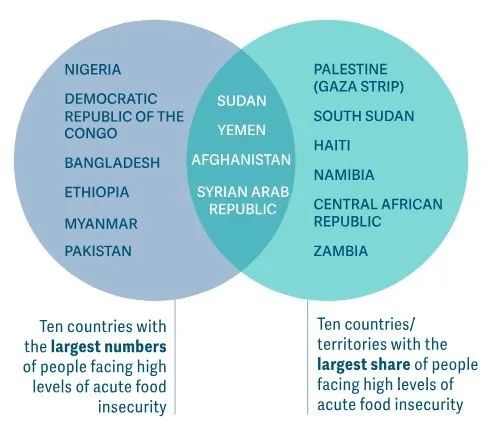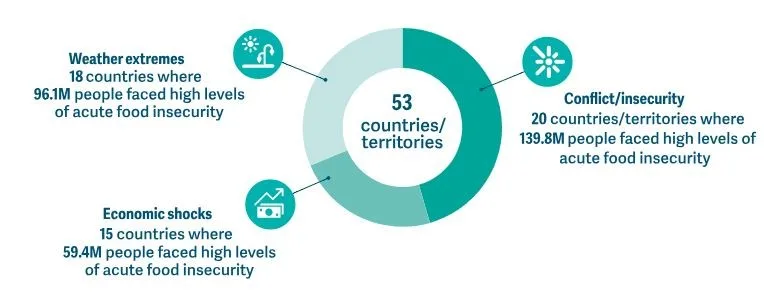Syllabus: GS3/Sustainable Development
Context
- The Global Report on Food Crises (GRFC) 2025 provides consensus-based analysis on acute food insecurity, acute malnutrition and population displacement in countries/territories identified as having food crises in 2024.
About
- The document is published annually by The Global Network Against Food Crisis (GNAFC) with analysis from the Food Security Information Network.
- GNAFC is an international alliance of the United Nations, the European Union, governmental and non-governmental agencies working together to address food crises.
- It offers insights into immediate and medium-term risks to the food security and nutrition status of populations.
- Though, India was not selected among the 53 countries analysed for the report.
| Terms Related to Food Security – Food security exists when all people, at all times, have physical, social and economic access to sufficient, safe and nutritious food that meets their dietary needs and food preferences for an active and healthy life. – Acute food insecurity occurs when any of the four pillars of food security — availability, access, utilization, stability — is disrupted. – A food crisis is when acute food insecurity exceeds national response capacity and requires urgent external aid. |
Major Findings
- 295 million people across 53 countries faced acute hunger, 13.7 million more than in 2023.
- Even though there were some improvements in 15 countries including in Afghanistan, Kenya, and Ukraine, deteriorating acute food insecurity in 19 others outweighed those improvements.

- Most Severely Affected
- The number of people facing catastrophic hunger more than doubled between 2023 and 2024, to reach 1.9 million — the highest on record since the GRFC began tracking in 2016.
- High malnutrition rates were recorded in the Gaza Strip, Mali, Sudan, and Yemen.
- Famine has been confirmed in Sudan, while other hotspots with people experiencing catastrophic levels of acute food insecurity include the Gaza Strip, South Sudan, Haiti, and Mali.
- Major Drivers of the Crisis
- Conflict, forced displacement, climate change & other economic factors like inflations, fragile state economy.

UN & Partner Recommendations
- Evidence-driven, impact-focused interventions.
- Invest in local food systems and integrated nutrition services to build long-term resilience.
- Scale proven solutions, pool resources, and center affected communities in responses.
Source: DTE
Previous article
US Remittance Tax Plan Raises Concerns
Next article
Gene Editing Therapy Used to Cure a Rare Disease